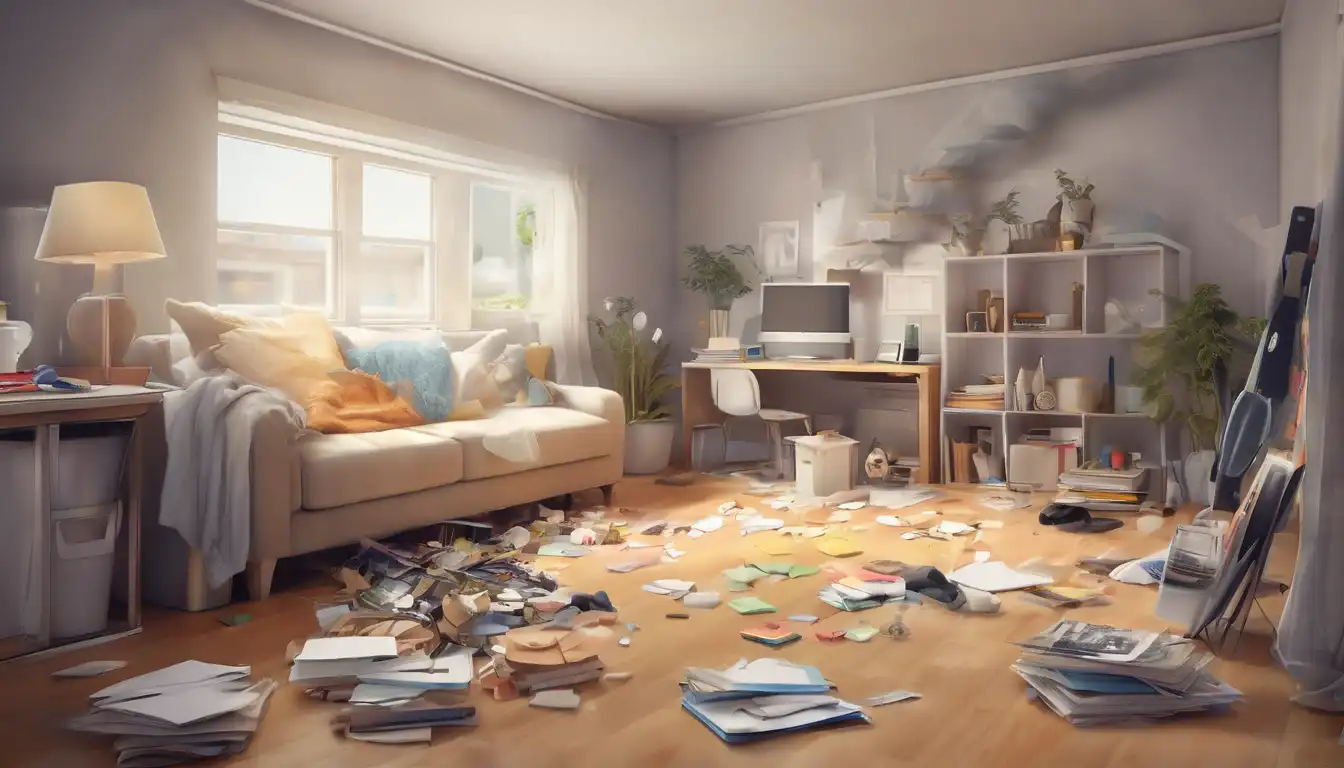Transform Your Home with These Efficient Decluttering Methods
Feeling overwhelmed by clutter in your home? You're not alone. Many people struggle with maintaining an organized living space, but the good news is that decluttering doesn't have to be a daunting task. With the right approach, you can transform your home into a peaceful, organized sanctuary quickly and efficiently. This comprehensive guide will walk you through proven strategies that make decluttering manageable and even enjoyable.
Why Decluttering Matters More Than You Think
Before diving into the practical steps, it's important to understand why decluttering is worth your time and effort. A clutter-free home reduces stress, saves time searching for items, creates more functional space, and improves overall mental well-being. Studies show that organized environments can boost productivity and reduce anxiety levels significantly.
Step 1: Set Clear Goals and Timeline
Begin by defining what you want to achieve. Are you targeting one specific room or your entire home? Set realistic goals - perhaps you want to tackle the living room this weekend or organize your kitchen cabinets over the next week. Establishing a clear timeline prevents overwhelm and keeps you motivated. Remember that even 15-minute daily sessions can yield impressive results over time.
Step 2: Gather Your Decluttering Toolkit
Preparation is key to efficient decluttering. Gather these essential supplies before you start: sturdy boxes or bins for sorting, garbage bags for disposal, cleaning supplies, labels, and a timer. Having everything within reach will streamline the process and prevent unnecessary interruptions. Consider creating a decluttering toolkit that you can reuse for future organizing sessions.
Step 3: The Four-Box Method for Quick Sorting
This classic organizing technique remains one of the most effective approaches. Create four categories: Keep, Donate/Sell, Trash, and Relocate. As you go through each area, place every item into one of these boxes. Be honest with yourself - if you haven't used something in over a year, it's probably time to let it go. This method prevents decision fatigue and keeps the process moving quickly.
Step 4: Tackle One Area at a Time
Instead of trying to declutter your entire home at once, focus on specific zones. Start with small, manageable areas like a single drawer, shelf, or countertop. Complete one space entirely before moving to the next. This approach provides visible progress and motivation. Popular starting points include entryways, kitchen counters, and bathroom vanities - areas that accumulate clutter quickly.
Step 5: Implement the 20/20 Rule for Difficult Decisions
When you're unsure about keeping an item, apply the 20/20 rule: if you can replace it for less than $20 in less than 20 minutes, consider letting it go. This principle helps overcome attachment to items that aren't truly essential. For sentimental items, take photos before donating them to preserve memories without keeping physical clutter.
Step 6: Create Smart Storage Solutions
As you declutter, think about how to organize what you're keeping. Use vertical space with shelves, invest in drawer organizers, and label containers clearly. The goal is to create homes for your belongings so everything has a designated place. Explore our guide on maximizing small spaces for creative storage ideas that work in any home.
Step 7: Establish Maintenance Habits
Decluttering is only effective if you maintain the results. Develop daily habits like the "one-minute rule" (if a task takes less than a minute, do it immediately) and weekly quick tidy sessions. Designate specific drop zones for mail, keys, and other frequently used items to prevent clutter from accumulating again.
Common Decluttering Challenges and Solutions
Many people face specific obstacles when decluttering. If you struggle with sentimental items, consider keeping only the most meaningful pieces. For paper clutter, implement a digital filing system. When dealing with family members' belongings, have respectful conversations about what to keep and what to let go. Remember that perfection isn't the goal - progress is what matters.
Quick Room-Specific Decluttering Tips
Kitchen Organization
Start with expired food items and duplicate utensils. Group similar items together and use drawer dividers for cutlery. Install hooks inside cabinet doors for measuring cups and pot lids. The kitchen is often the heart of the home, so keeping it organized can have a significant impact on daily life.
Bedroom Simplification
Focus on clothing first using the seasonal rotation method. If you haven't worn something in a year, consider donating it. Use under-bed storage for off-season items and implement a capsule wardrobe approach to reduce decision fatigue each morning.
Home Office Efficiency
Go digital whenever possible to reduce paper clutter. Create an efficient filing system for important documents and establish a regular shredding schedule for sensitive materials. A clean workspace can dramatically improve focus and productivity. Check out our home office organization guide for detailed strategies.
The Psychological Benefits of a Decluttered Space
Beyond the physical benefits, decluttering offers profound psychological advantages. A organized environment reduces cognitive load, allowing your brain to focus on more important tasks. Many people report improved sleep, reduced anxiety, and increased creativity after decluttering their homes. The process itself can be therapeutic, providing a sense of control and accomplishment.
Maintaining Your Decluttered Home Long-Term
The final step is developing systems to maintain your newly organized space. Schedule regular 15-minute tidy sessions, implement a one-in-one-out rule for new purchases, and periodically reassess your belongings. Remember that decluttering is an ongoing process rather than a one-time event. With consistent effort, you can enjoy the benefits of an organized home indefinitely.
Decluttering your home quickly is achievable with the right strategies and mindset. By breaking the process into manageable steps and maintaining consistent habits, you can transform your living space into a peaceful, functional environment that supports your lifestyle and well-being. Start small, celebrate your progress, and remember that every item you let go creates space for what truly matters in your life.
